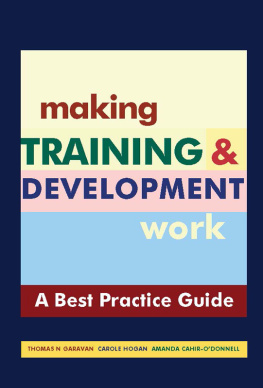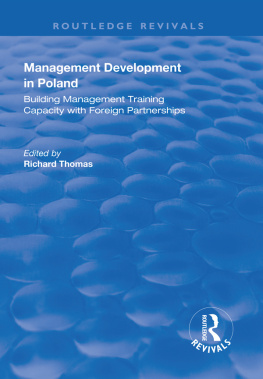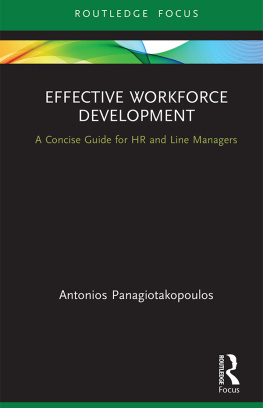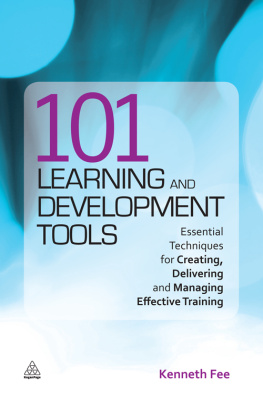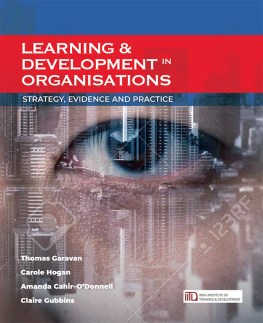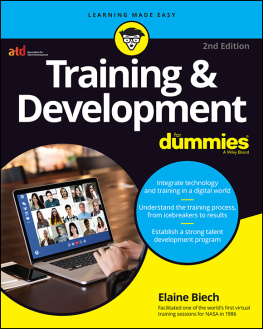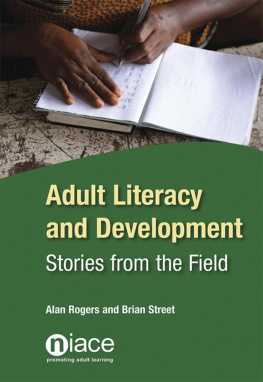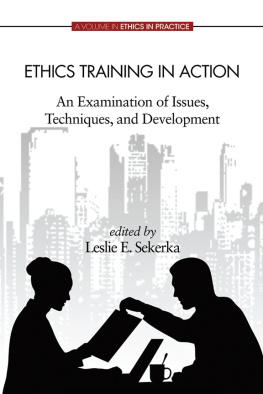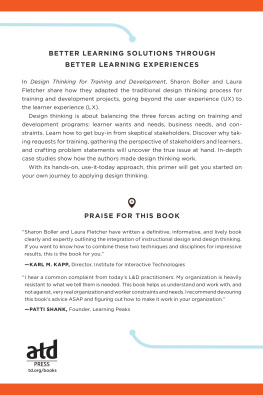The essential purpose of this book is to describe and explain a number of core concepts concerned with the role and effectiveness of training and development (T&D) in organisations and to identify and describe the skills necessary to be an effective trainer. We are conscious that T&D practitioners are busy people and are unlikely to read large amounts of theory. With this in mind, each chapter provides an integrative summary of the implications of current research findings on T&D and identifies practical steps that you can take as a trainer to implement best practice.
This book concentrates on the priorities of the T&D specialist. It goes beyond existing training books in a number of ways by:
This provides a strong theoretical-driven foundation, in addition to a practitioner orientation to the book.
The book emerged from a realisation that many practitioner-focused training texts tend to place too much emphasis on the practice without sufficiently explaining the relevant theoretical foundations in practitioner-type language, or tended to be primarily theoretical with a strong strategic focus. We fully understand the need for T&D to think in strategic terms. However, in this book, our primary objective is to focus on the operational realities that the trainer experiences. Our intended audience is practitioners in the field of T&D. They may be internal or external consultants or specialists and are likely to hold such job titles as Training Manager, Training Specialist, Instructional Designer and Direct Trainer. In many larger organisations, responsibility for T&D activities are differentiated between training specialists and line managers. Although the principles set out in this book apply to both, to the extent that the training and development of employees is more likely to be concerned with fundamental practices such as the assessment of T&D needs, formal and informal instruction, and training design and evaluation, this book will prove more helpful to individuals working as specialists within the field.
This book owes its existence to numerous sources of inspiration and support. In particular we wish to recognise the invaluable contribution of our students, colleagues and peers, who have shaped our thinking and contributed to the concepts developed and explained here. The book is given added colour and texture through the case scenarios that we derived from our combined experiences as practitioners and teachers of training and development.
ACKNOWLEDGMENTS
We are fortunate to have the full support of our respective organisations, the University of Limerick, Carole Hogan Associates and AIB Capital Markets.
We would also like to acknowledge the support of a number of leading exponents of T&D in organisations, including Pat Salisbury and Ciara McClusky, Fexco Ireland; Paul Ennis, Eugene Dalton, Mick Loughnane and Jim McCabe, Electricity Supply Board; Aidan Laurence, HP Ireland; Des Moore, Blanchardstown Institute of Technology, Dublin; John Mullen, CEO, Thurles Credit Union; John Conway, HR Director, AIB Capital Markets; Pat Casey, HR Director, Dell Computers; Professor Joyce OConnor, Julie Byrne and Grace OMalley, National College of Ireland; Dr Nancy Sullivan, Director of Curriculum and Instruction & Professional Development, Easton Public Schools, MA, USA; Dr John R Sullivan, Executive Director of the New England School Development Council, USA; Professor JV Rice, Trinity College, Dublin; Dr Alma McCarthy, National University of Ireland Galway; Dr David Kearney, Director OPDC; Ineke Powell, Director, OPDC; Paul Dunn, P3 Training Ltd; Damian Lenagh, HR Director, Aer Rianta; Supt Pat Murphy, Director of Quality, Garda Training College, Templemore; Con Egan, HR Director, SPS Shannon; John Mangan, HR Manager, Kostal Ireland; Breda Flaherty, HR Director, Alps (Electric) Ireland Ltd; Pat Costine, Pat Costine & Associates; Michael Barry, Manager, FS, Waterford; Noreen Clifford, Consultant; Judy Kinnane, Consultant; Harris Sheike, Consultant; Ann Bollard, Director of Training and Development, Headway Ireland; Conor Clarke, Director of Training and Development, Organon Ireland; Christy Cooney, Assistant Director General, FS; Professor Mirtn Fathaigh, University College Cork; Anna Cunningham, Philip Smyth, Joe McDonald and Kate OConnell, Shannon College of Hotel Management; Hugh Fisher, Director, Training Connections, Dublin; Zeita Lambe, Training Specialist, IBM Ireland; David Goggin, Training Specialist, eircom.net; Alan Grey, Wyeth; Aine OReilly Doyle, Consultant; Helena Downey, Consultant; Maurice Kearney, Principal, Ratoath NS.
We are delighted that CIPD Ireland are associated with this book and acknowledge the leadership of Michael McDonnell, Director, CIPD Ireland.
The authors would like to thank the following at the University of Limerick, AIB Capital Markets and Carole Hogan Associates for their support and encouragement: Roger Downer, President, University of Limerick; Professor Noel Whelan, Vice President, University of Limerick; Professor Donal Dineen, Dean, College of Business; Joseph Wallace, Head, Department of Personnel and Employment Relations; colleagues Paddy Gunnigle, Patrick Flood, Mike Morley, Sarah Moore, Sarah McCurtin, Tom Turner, Daryl DArt, Claire Gubbins, Helena Lenihan, Juliet McMahon, Fergal OBrien, Noreen Heraty, David Collings, Linda Edgeworth, Eoin Reeves, Eoin Devereux, Tom Kennedy, Eamon Collins, Michael Gaffney, Christine Cross, Bridie Barnicle, Dave McGuire, Claire Murphy, Ronan Carbery. Elizabeth Switzer, Naoise Blake, Eilis Moylan, Jeannie Colvin, Deirdre Gray, Sinead Gaynor, Kathleen Murphy; Colm Doherty, MD, AIB Capital Markets; Avril Farrell; Anne Kiely; Helena Downey; Denise Banks; Grace Doyle; Faye Doherty; Niamh Hurley; Maurice McCrum; Kieran Browne; Anne Wasylyk; Kieran Corcoran; Cathy Murphy; Colette Brennan; Denis Culligan; Andrew Rogals; Libby Thornton; Michelle Carter; Michelle Murphy; Karen Nicholson; and Gerard Manning.

